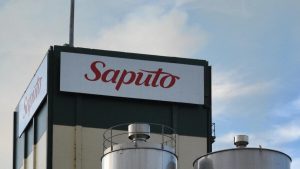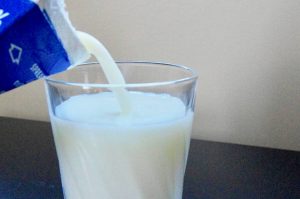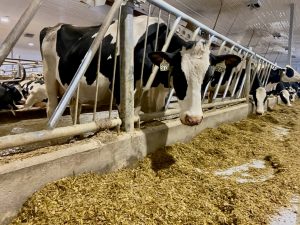
The Dairy Farmers of Canada (DFC) has a goal to reach net zero on carbon emissions but admits the plan to get there doesn’t exist. Not yet, at least.
“It kind of reminds me of JFK saying, ‘By 1969, we’ll have a man on the moon’ and they hadn’t invented rockets yet,” said DFC director Korb Whale.
“Our consumers were demanding that we be more environmentally responsible, and governments have already established ‘net zero by 2050’ both in Canada and around the world. It made a lot of sense to join in that instead of being legislated to.”
On July 4, DFC announced it had launched a campaign to promote its climate goals, touting farmers’ “sustainable strategies” like soil health, renewable energy and plastics recycling.
The roadmap is still in the works, Whale said. DFC has been consulting with experts for the past six months and will consider a list of best management practices they compiled in a “living document.”
With today’s technology, they can get about 70 per cent of the way to net zero, Whale said, adding that number is in actual reductions, not offsets.
The total plan does, however, include some offsetting.
“In the next 28 years we need to come up with 30 per cent more tools to get to where we need to be,” said Whale.
Where it’s at
She has consulted with DFC on its net-zero plans.
On Ontario dairy farms, methane makes up 59 per cent of emissions. Thirty per cent is nitrous oxide and 12 per cent is carbon dioxide. Farms in the rest of Canada should have similar rates, said Wagner Riddle.
About three-quarters of the methane emitted comes from cattle digestion, with the rest stemming from manure.
In Europe, companies including Denmark’s Arla Foods are trialing feed additives shown to reduce emissions. Bovaer, from Dutch company DSM, has been approved for use in the European Union and can reduce methane emissions by around 30 per cent, according to the firm’s website.
In Canada, Bovaer is classified as a veterinary drug because it changes the digestive process of an animal, according to a March report from the Western Producer.
Other additives are being studied, according to Wagner Riddle, but “it’s just one solution.” Feed management is another important component.
“There can be a big difference on farm in terms of their carbon footprint just by how they manage the herd.”
For example, precision feeding — the use of a total mixed ration to increase efficiency — can reduce a farm’s carbon footprint.
Good management could potentially remove all emissions from manure, she added. Researchers are looking at “acidification,” a process by which a sulfur-based compound is added to manure to inhibit methane-producing micro-organisms.
The practice is already in use in Europe, Wagner Riddle said. In Canada, further trials are needed on safety and cost-effectiveness.
Simpler methods, like fully emptying manure storage or covering manure with straw, have also been shown to reduce emissions, she added.
The good news is that DFC’s target will spur further study.
“Some of these things that we know work in research and that need to be tested at the farm level, there will be an incentive,” she said.
Calling in the offsets
The site touts reduced tillage, crop rotations and cover crops as practices that will get dairy production to net zero. These are practices meant to sequester carbon as opposed to cutting emissions.
It makes sense to offset at least a bit, according Wagner Riddle.
“The emissions from dairy are going to be very difficult to ‘make zero,’” the researcher said.
Biodigesters are another potential offset, using manure to produce renewable natural gas (RNG). For this, DFC will get some help.
At its annual meeting earlier this July, GET Corp, a green energy company founded by dairy farmer Nick Thurler, rolled out a plan to build 310 biogas plants across Canada by 2030. The first six are to be built in 2023 and 2024.
“Our goal with the program is really to provide that avenue that gives access to dairy farms of all sizes,” GET Corp CEO Shikha Jain said in a later interview with the Co-operator.
The plan is to buy manure from dairy farms to feed into the biodigesters. The leftover material, called digestate, will be returned to the farmers as fertilizer.
RNG can then be sold and used much like conventional natural gas, with a cut of the sale also going back to the producer. Farmers can also host a biodigester and be paid rent for the land it occupies under the proposed plan, or buy a biodigester and increase their share of revenue from RNG.
GET Corp will handle the logistics of equipment building and maintenance, hauling of organics, sales of RNG and administration, “to alleviate the pressures for dairy farmers and let them do what they’re doing well, which is dairy farming,” Jain said.
Once all 310 digesters are built, they have potential to reduce or offset emissions by 1.5 million tonnes per year, according to the company.
Next steps
The federal government has given “verbal support” to DFC’s goals, according to Whale.
“We need you to help us develop the programs for you to succeed, and we’re partners, is the gist of what they have said.”
DFC is not considering either carrots or sticks to boost farmer participation, Whale said.
“I think at this point there’s some social pressure for us to do this as an industry,” he told the Co-operator. “Consumers are demanding more information. They want certain things to be clear. And I think our social licence to produce milk rests on how well we react to some of these pressures.”

























